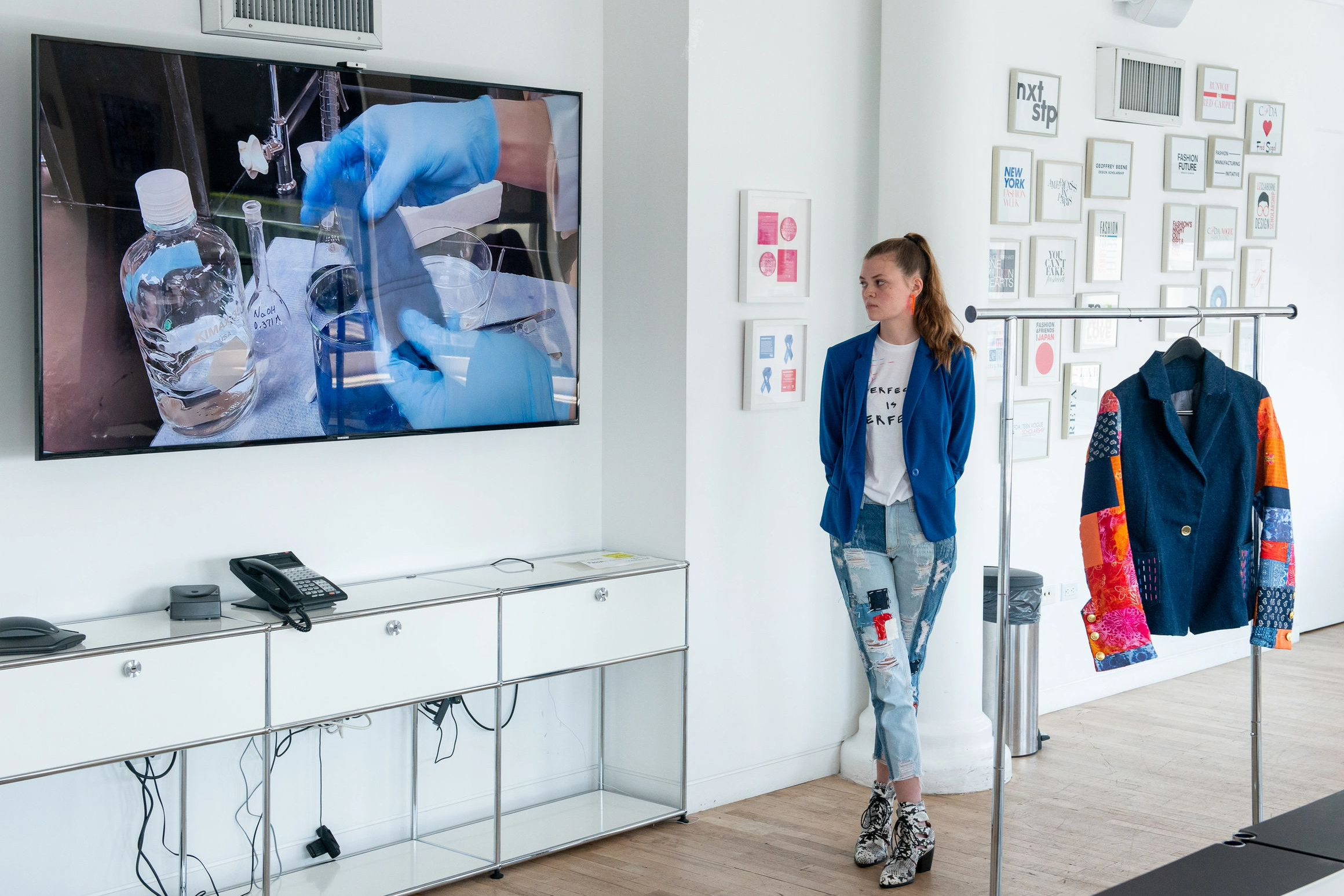A new dyeing technique may offer a solution to more sustainable blue jeans.
As a global market, denim is expected to be worth $102.45 billion by 2025. However, between toxic dyeing techniques and the heavy use of conventional cotton, that can take upwards of 20,000 liters of water to produce a single pair of jeans. Denim plays a major role in fast fashion, sports and luxury apparel as well as many other items. Yet, as many denim brands continue to put forward unsustainable efforts, consumers might ask: What practices can designers integrate into their work to achieve eco-friendly denim?
For fashion designer Isabel Holden, the answer is simple. Known for her denim practices and dyeing methods, Holden was a recipient of the CFDA Liz Claiborne Impactful Futures Design Scholar Award for her innovation within sustainable systems. In collaboration with Marist College’s chemistry department and students Jason Randall and Callan McLoughlin, Holden was able to develop a system that offered a more sustainable design technique. Since then, she has interned for the likes of Abercrombie & Fitch and is currently a designer at Lucky Brand Jeans in New York.

As Holden sees it, “Innovation is a huge aspect of achieving sustainability. For that reason, it becomes extremely important to constantly learn and stay curious.” Seen as a recycling process, Holden’s dyeing method extracts indigo dye from old jeans, indigo-dyed garments, and denim scraps. From the initial extraction, the indigo dye is then used in dye baths, which allows designers the ability to create new garments or store the dye for later. This dyeing process is one that has helped to offer a modern, sustainable approach to the production of denim.
As new design methods for denim allow for an achievement towards sustainability, it’s equally important for designers to understand how to personally integrate the textile. “There are a number of amazing sustainable denim brands out there working to make a positive impact on a damaging industry. From a consumer perspective, the most important thing is research. Don’t just trust a label because it’s green or states ‘eco,’ do the hard work and learn where the clothing is made, who makes it, and what its environmental impact is,” states Holden.
“The truth of the matter is that the most sustainable denim is already in your closet. I think one of the most important things for us to learn as consumers, particularly with denim, is that if we take good care of our jeans, make an effort to learn how to properly repair them, and embrace imperfections, they can live on forever,” explains Holden.
Image credit: Courtesy of Isabel Holden




